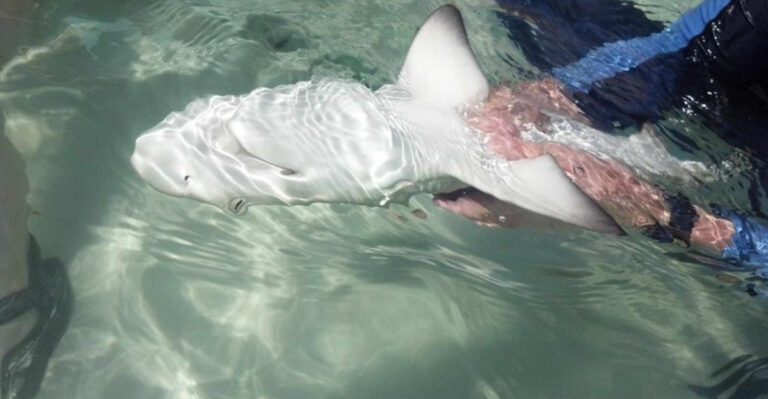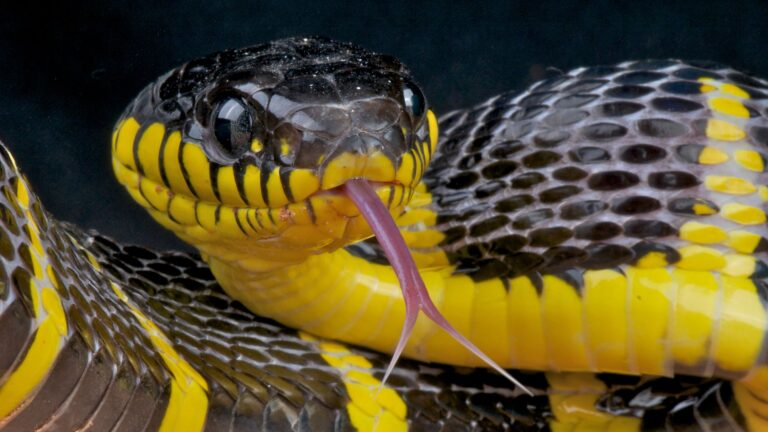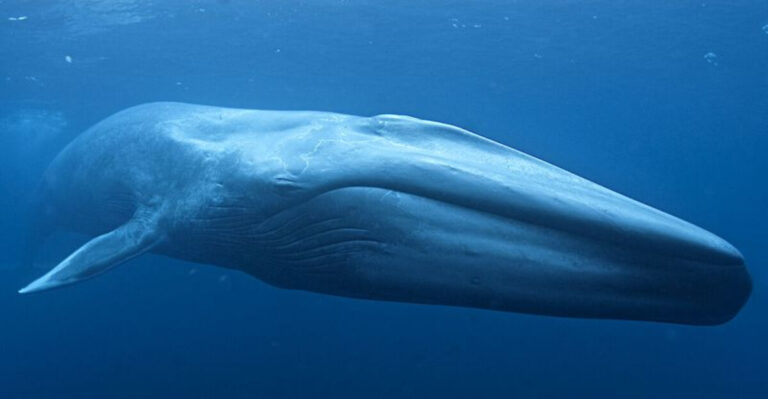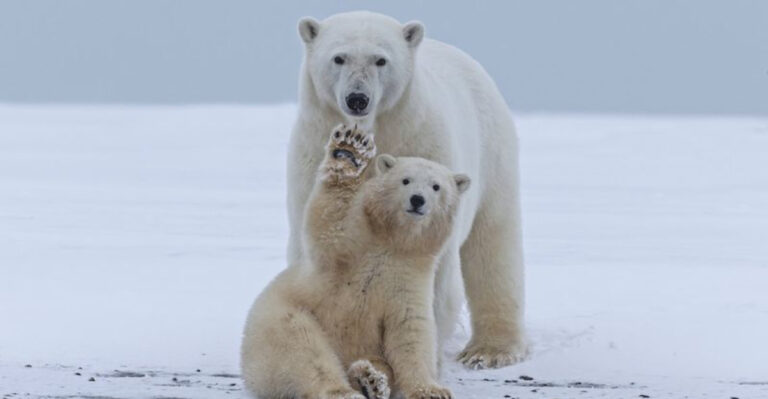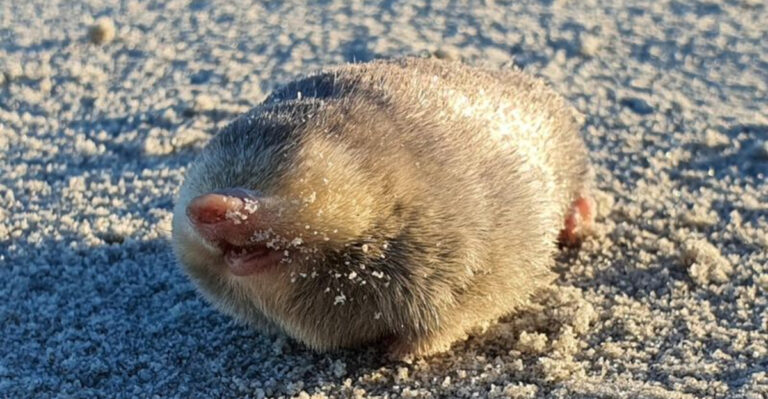The 7 Longest Whales In The World
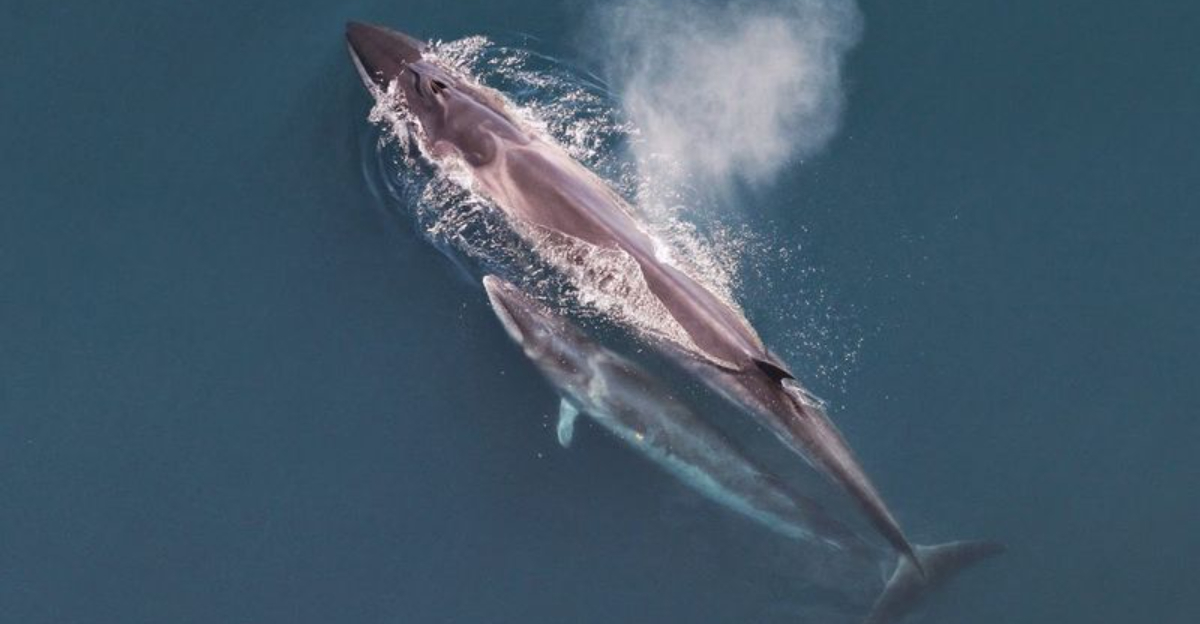
Whales, the majestic giants of the ocean, have fascinated humans for centuries with their immense size and mysterious lives beneath the waves.
Among these incredible creatures, a few stand out due to their extraordinary lengths. Today, we’ll delve into the fascinating world of the seven longest whales, providing a captivating glimpse into their lives and habitats.
From the icy waters housing the Bowhead Whale to the more temperate zones accommodating the Bryde’s Whale, we explore the unique attributes and quirks that make each of these aquatic giants special. Prepare to be amazed by the sheer size and splendor of these ocean titans!
1. Bowhead Whale
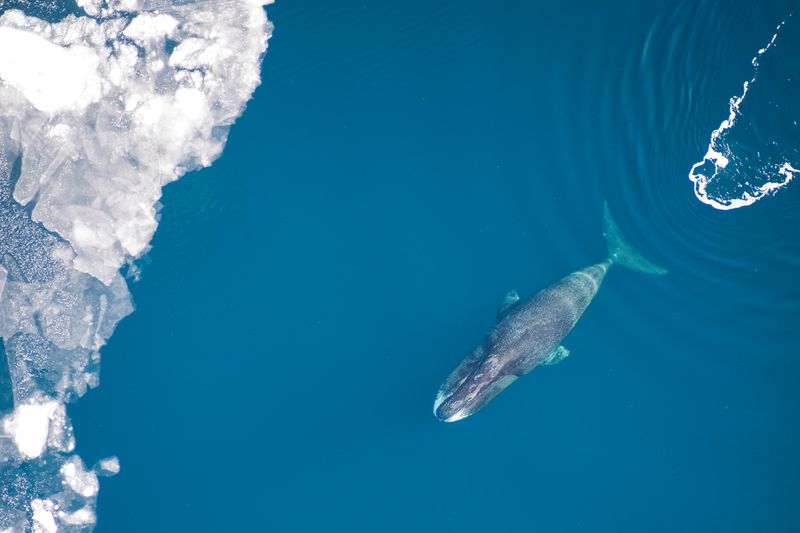
The Bowhead Whale is an awe-inspiring creature that primarily inhabits the icy waters of the Arctic and sub-Arctic regions. Known for its massive triangular skull, the Bowhead uses its powerful head to break through thick ice. This adaptation is essential for its survival in some of the world’s most hostile environments.
Measuring up to 66 feet in length and boasting a lifespan that can exceed 200 years, the Bowhead Whale is not just one of the longest-living mammals but also one of the longest whales. Its impressive size and longevity make it a subject of fascination among marine biologists and nature enthusiasts alike.
Despite its formidable size, the Bowhead is a gentle giant, feeding primarily on small marine organisms. Its baleen plates, reaching up to 13 feet long, help filter vast amounts of water to capture krill and plankton.
This unique feeding mechanism has evolved to sustain its enormous body. Without a doubt, the Bowhead Whale is a true marvel of the ocean world.
2. Humpback Whale
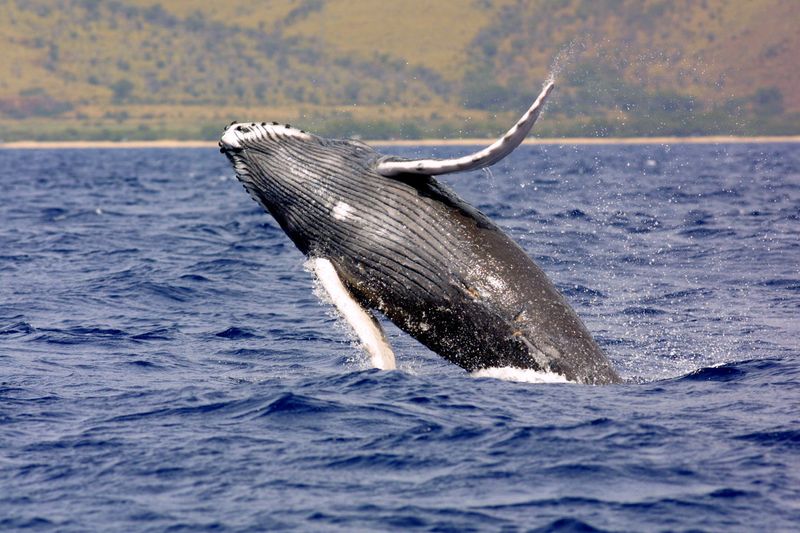
Humpback Whales are famous for their acrobatic displays and complex songs, making them one of the most recognizable whale species. These whales can grow up to 62 feet in length and are often found in oceans worldwide, migrating thousands of miles each year between feeding and breeding grounds.
Their unique body shape, with long pectoral fins and a knobbly head covered in tubercles, makes the Humpback easily identifiable. These features not only add to their charm but also serve functional purposes, aiding in maneuverability and sensory perception in the vast ocean.
Humpbacks are also known for their remarkable songs, which can last up to 20 minutes and travel great distances underwater. These vocalizations are believed to play a role in communication and mating, with each population of Humpbacks having its own distinct song.
The combination of their impressive size, distinctive appearance, and captivating behaviors makes Humpback Whales a favorite among whale watchers and researchers.
3. Gray Whale

Gray Whales are known for their incredible migration journeys, covering up to 14,000 miles round-trip, the longest migration of any mammal. These whales, which can reach lengths of about 49 feet, travel from their feeding grounds in the Arctic to breeding areas in the warm lagoons of Baja California.
Gray Whales are often called “devil fish” due to their aggressive behavior when hunted, but in reality, they are mostly inquisitive and gentle creatures. Their distinct mottled gray skin, often covered with barnacles and lice, gives them a unique appearance that sets them apart from other whale species.
Their primary diet consists of small crustaceans dug up from the ocean floor, which they filter through their baleen plates. This bottom-feeding technique is rare among whales and highlights the Gray Whale’s adaptability to its environment.
With their remarkable endurance and unique feeding habits, Gray Whales are a testament to the wonders of the natural world.
4. Sei Whale
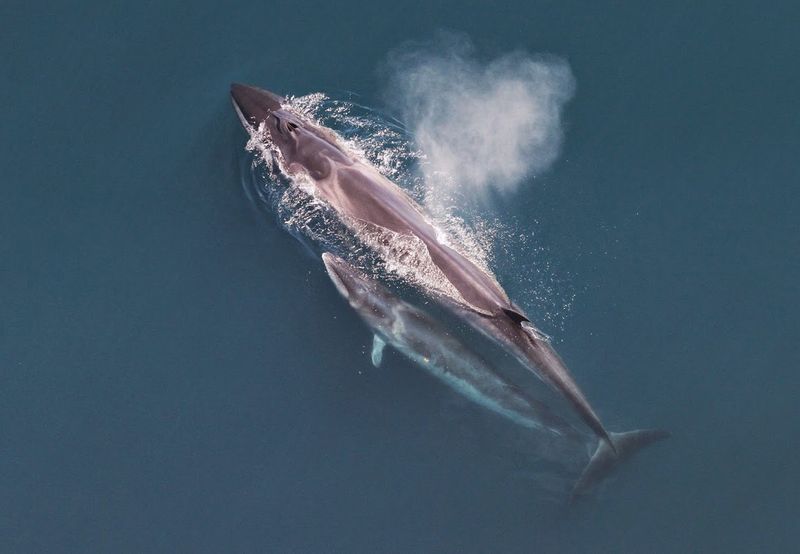
The Sei Whale is a master of speed among the great whales, capable of reaching up to 34 miles per hour. Measuring up to 64 feet in length, these whales are found in deep offshore waters worldwide, though they prefer temperate and subtropical regions.
With a slender, streamlined body and dark gray skin, the Sei Whale is built for swift movement through the ocean. Unlike many other whales, Sei Whales are solitary or found in small groups, making them somewhat elusive and less studied compared to their larger relatives.
Their diet mainly consists of small fish, squid, and plankton, which they consume by skimming the water’s surface with their baleen plates.
Despite their speed and agility, Sei Whales have faced threats from commercial whaling, leading to a decline in their population. However, conservation efforts are underway to protect these swift and graceful giants of the sea.
5. Bryde’s Whale
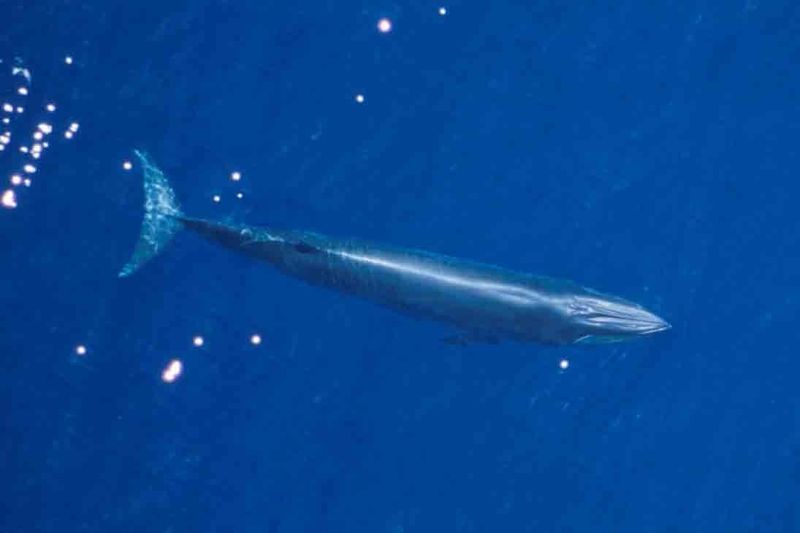
Bryde’s Whales are tropical ocean dwellers, preferring warmer waters where they can often be seen close to the coast. These whales can grow up to 50 feet long and are characterized by three distinct ridges on their heads, setting them apart from other baleen whales.
Unlike many whale species, Bryde’s Whales do not migrate long distances, instead staying within their tropical habitats year-round. This behavior makes them somewhat easier to study, as they can often be found in consistent locations.
Their diet is varied, consisting of fish, krill, and other small marine life, which they capture with their baleen plates. The Bryde’s Whale’s ability to thrive in warmer waters without migrating vast distances is a testament to its adaptability and resilience.
With their unique physical features and fascinating behaviors, Bryde’s Whales offer a captivating glimpse into the diversity of marine life.
6. Minke Whale
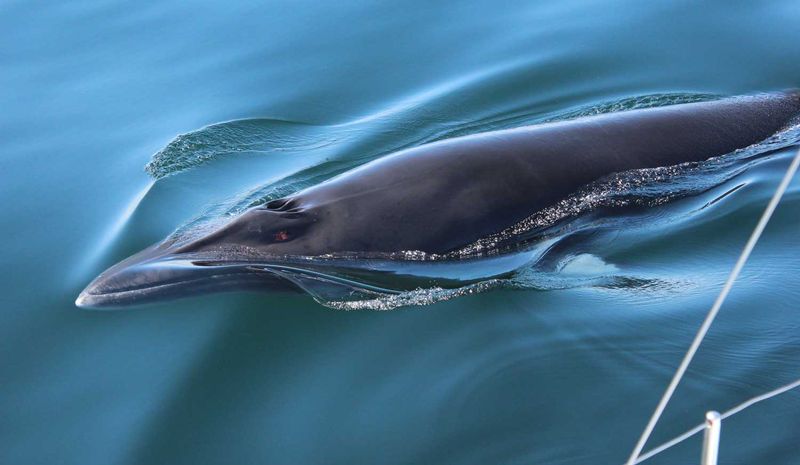
Minke Whales are among the smallest of the baleen whales, but they are no less impressive. Reaching up to 35 feet in length, these whales are found in oceans around the world, from the icy waters of the Antarctic to the more temperate regions.
Minke Whales are known for their curious nature and often approach boats, much to the delight of whale watchers. Their sleek bodies, with a characteristic black and white coloration, enable them to glide effortlessly through the water, making them agile hunters.
Their diet primarily consists of small fish and krill, which they capture using their baleen plates. Despite being heavily hunted in the past, Minke Whales are now protected in many areas, and their populations are considered stable.
These adaptable and inquisitive whales continue to intrigue and charm those lucky enough to encounter them in the wild.
7. Omura’s Whale
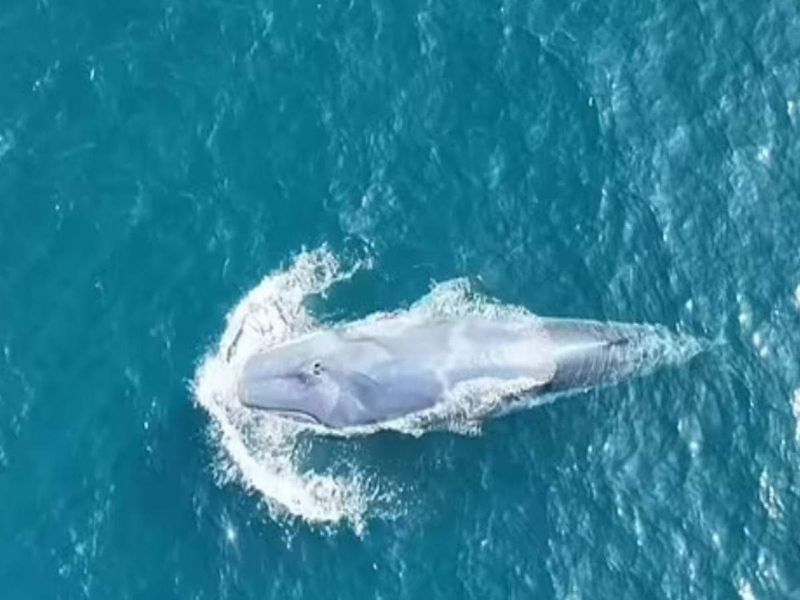
Omura’s Whales are elusive and enigmatic, often found in the warm, tropical waters of the Indian and Pacific Oceans. These whales are relatively small compared to other baleen whales, reaching lengths of only about 38 feet.
Omura’s Whales were only recognized as a separate species in the early 2000s, and much about their behavior and biology remains a mystery. They are characterized by unique asymmetrical jaw markings and a slender, streamlined body, making them distinct from other whales.
Their feeding habits are similar to those of other baleen whales, as they filter small fish and plankton from the water.
However, sightings are rare, and much of their life cycle and habits remain unknown. The mystery surrounding Omura’s Whales continues to intrigue scientists and marine enthusiasts, drawing attention to the fascinating diversity within the world’s oceans.

